This article originally appeared in Butterfly Gardener Magazine, Vol 26, Issue 3, Fall 2021
What happens when you convert plain turf to a wildflower meadow? A lot actually.
Our home sits on the bottom of a downward sloping cul-de-sac near the outer edge of the Sourland Mountain region of New Jersey. We are one of eight members of a homeowner’s association whose sole purpose is to maintain two stormwater detention basins. One of those basins is located directly behind our home, visible only to us, and occupies more than an acre.
After ten years of tolerating this sterile patch of land, we yearned for a more beautiful view. That desire is what inspired the idea of turning the detention basin into a wildflower meadow. We later learned that this conversion would attract an abundance of butterflies, bees, and birds that we never previously saw here.
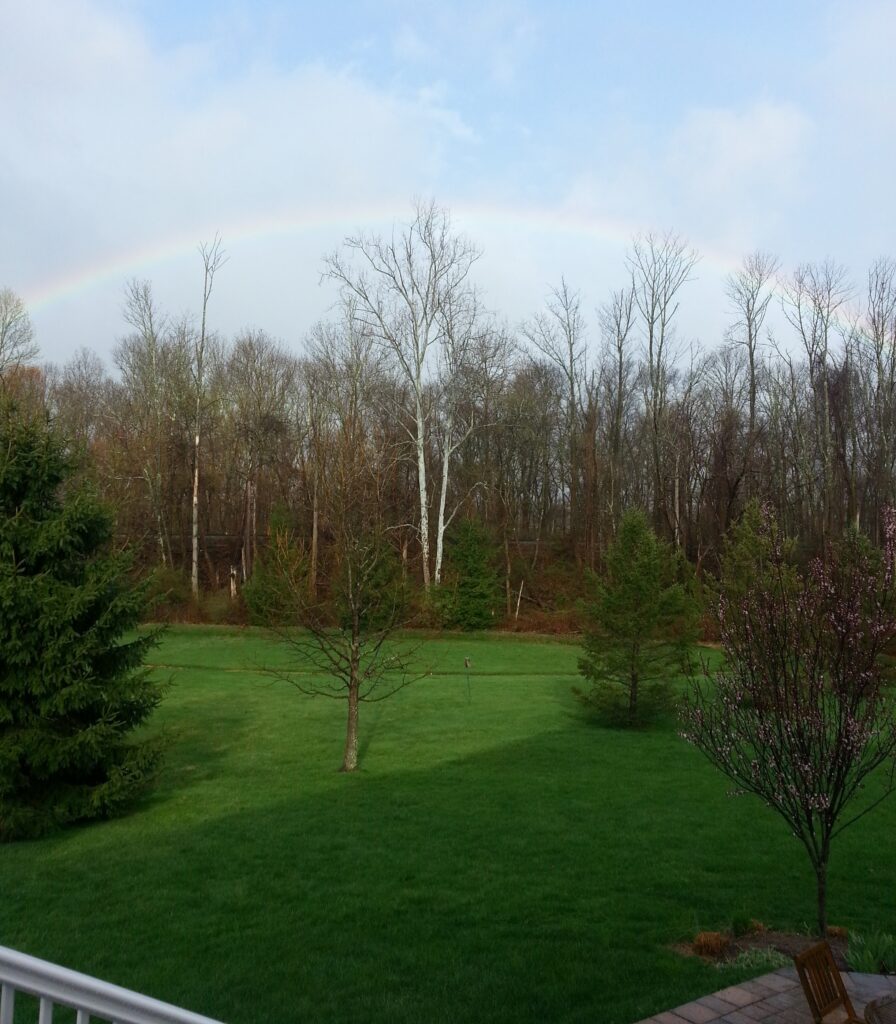
The detention basin as lawn grass, before the meadow was planted.
Before we could begin, some “due diligence” was required. First, we needed to get the permission of our homeowners’ association, since they own the property and are responsible for its maintenance. Persuading the association to approve the transformation was easy, since we offered to pay the cost of conversion ourselves. In addition, the association’s maintenance costs would drop dramatically because instead of having to be mowed every two weeks during the growing season the basin needed mowing only once a year in late winter. If we hadn’t paid the up-front cost, we estimate that the association would have broken even in five to eight years.
We also needed approval from the township, which has stormwater-basin maintenance standards, and requires that all stormwater landscaping be designed by a licensed landscape architect.
The detention basin has two concrete low-flow channels and one concrete riser. Before the conversion, grass grew in the low-flow channels, which is not supposed to happen. In our design, we chose to leave the channels in place in order to minimize our costs. This simplified the approval process. Since we were not modifying the stormwater management system itself, all that was required was proof that the party performing the work was a licensed landscape architect.
The plan was to use a seed mix appropriate to the growing conditions in the detention basin. Most of the area receives full sun, with one corner in partial shade. The soil was compacted and dry, except when inundated with stormwater. We chose a seed mix of deer-resistant plants suitable for a floodplain—species that are great at tolerating both dry and wet spells. A little drought doesn’t make the flowers any less showy, nor does the foliage turn brown.
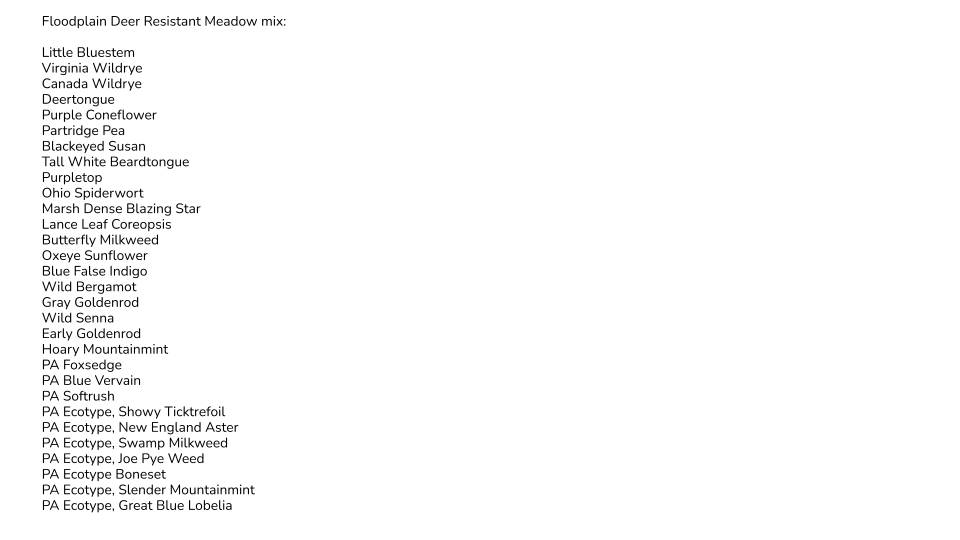
Two applications of herbicide were used to kill the existing lawn before we did the seeding in spring. In a matter of months, the transformation began. While the plants’ top growth may seem slow in the beginning, it’s the growth you can’t see underground that is really taking shape. Unlike lawn grass, the roots of native wildflowers and grasses go deep, enabling the soil to absorb large amounts of rainwater, and making the operation of the detention basin more efficient than before the transformation. Since the conversion to a meadow, the low-flow channels require less maintenance because they remain clear of silt, plant growth, and other debris.
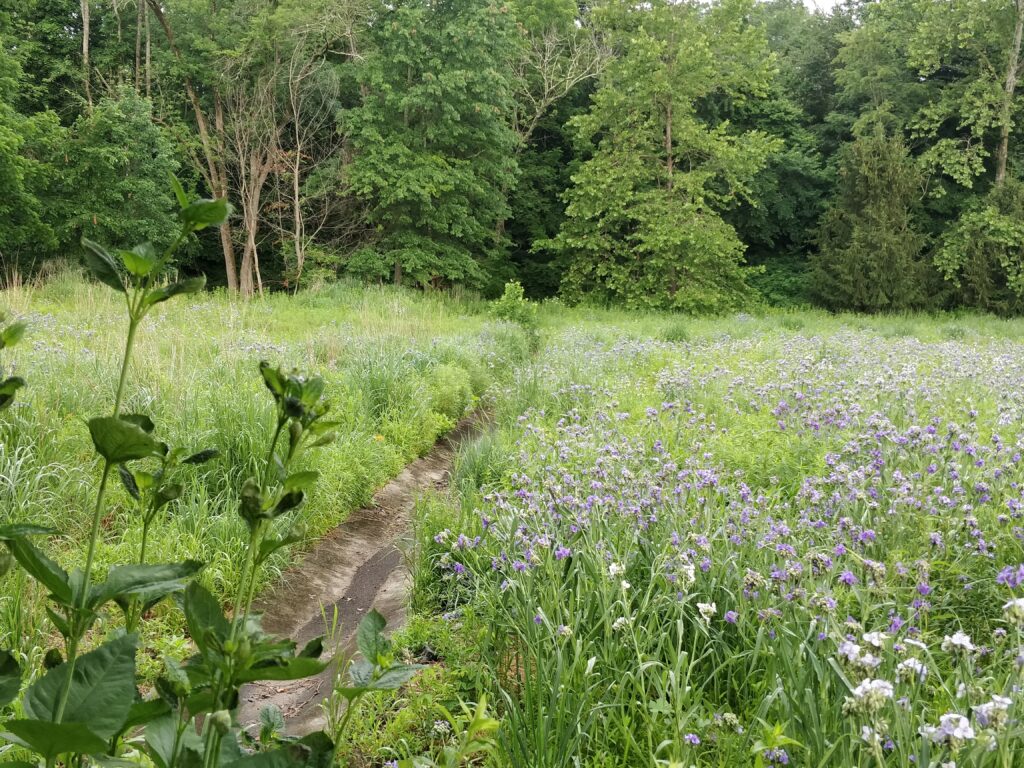
The detention basin low-flow channel stays clear with little maintenance.
By the second summer, we were no longer looking at a monotonous scene lacking any seasonal choreography, but instead at a beautiful flowering meadow. As you can imagine, a meadow is an evolution. From year to year, different plants mature and begin to bloom, while others may become less prominent. We are considering adding plants to give the basin even more color and texture.
Not only are the new meadow plants more visually appealing than lawn, but now we never look out our windows without seeing something flying about—from butterflies to Bald Eagles, as well as numerous songbirds and woodpeckers. Countless butterflies include Eastern Tiger Swallowtail, Red-spotted Purple, Monarch, Spicebush Swallowtail, Pearl Crescent, Red Admiral, Clouded Sulphur, Common Buckeye, and many skippers, to name a few.
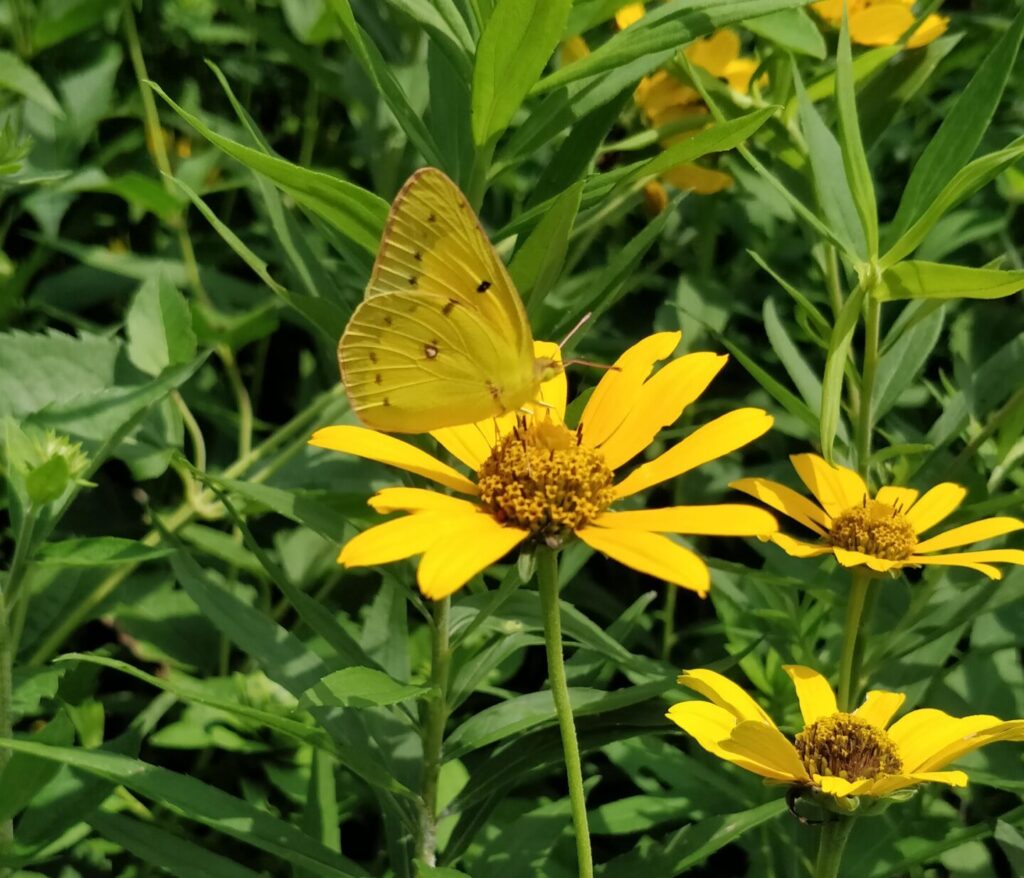
Smooth Oxeye with nectaring Orange Sulphur.
Wondering what happens to the meadow in fall and winter? Well—it turns lovely shades of auburn, mahogany, hazel, amber, and sorrel that slowly morph into winter tans, browns and grays. The winter meadow provides food and shelter for birds and other animals. We see Juncos, Field Sparrows, and White-throated Sparrows bobbing up and down on long stems of grass.
Just after the last remnants of snow have melted, the meadow gets mowed. Each year, we alternate leaving different areas of the basin uncut to provide “habitat islands” where overwintering insects are left undisturbed. When the Tree Swallows reappear in late March from their southern wintering grounds, the whole cycle begins anew and we look forward to another year of growth and beauty unfolding.
After the success we had with the detention basin turned meadow, we decided to install a second meadow in front of our home. While significantly smaller, it is no less a biodiversity haven that we affectionately call the Mini Meadow.
In addition to wildflowers, we’ve planted evergreens and small trees throughout this space. The birds especially love the trees! Butterflies are a welcome sight as we pull in our driveway. Additionally, we planted a micro-meadow to hide the cover of our septic tank, and another meadow on the side of our property.
Our daughter was about five years old when we transformed the detention basin to a meadow. Now nearly 10, she has grown up with a very strong affinity for the natural world.
She sees the pollinators and birds that call our place home as very special creatures. I can’t imagine our home without meadows, and I don’t think she will ever lose her strong connection with nature.
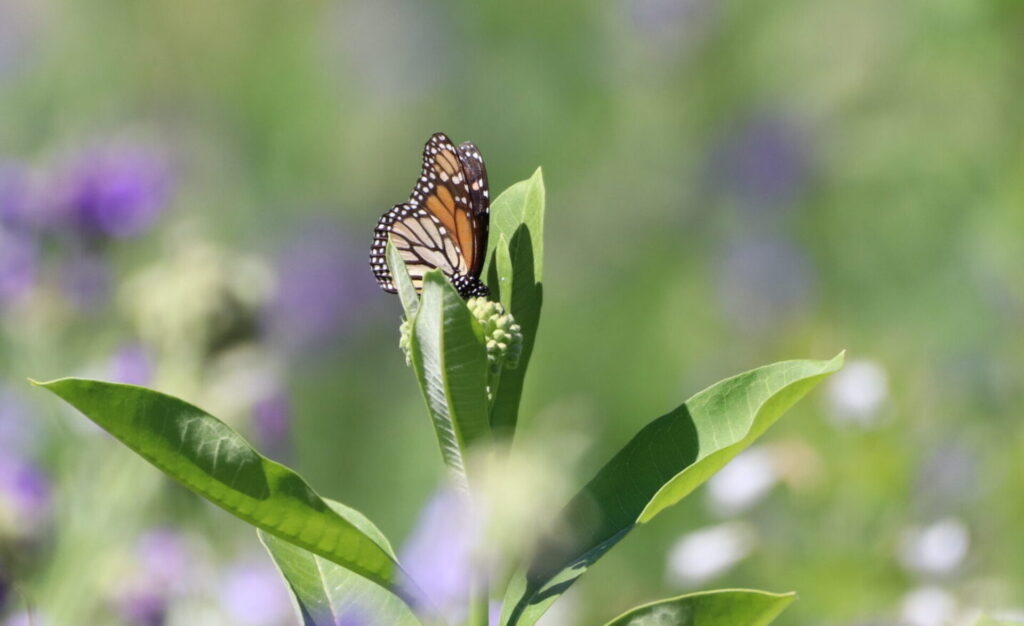
The meadow in mid-summer hosts Wild Bergamot and Monarchs.
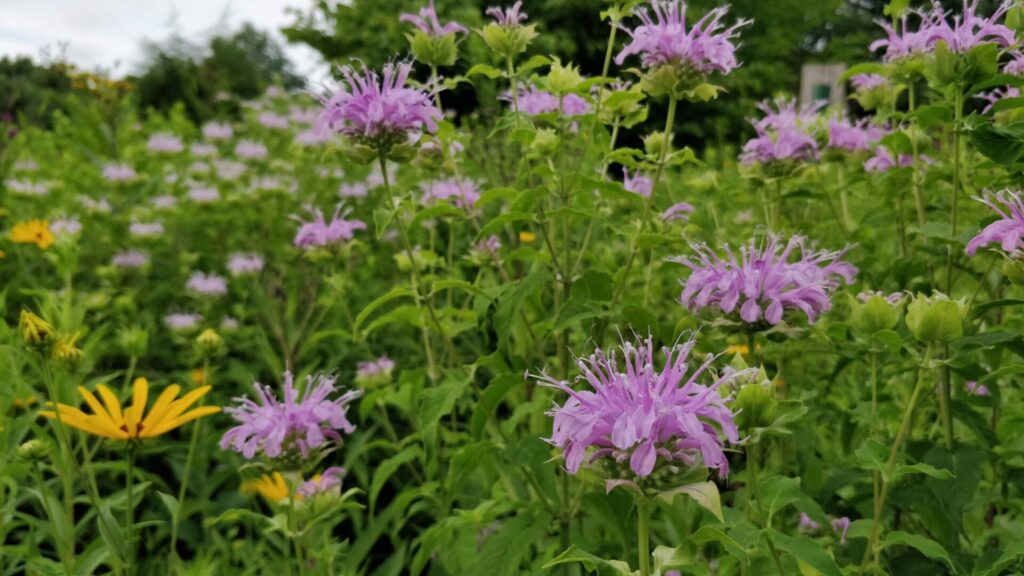
We realized that our transformed home needed a name. And so, Flutter By Meadows was born, as was my blog of the same name. Inspiration for my blog is almost entirely based on what I encounter on our property. Having spent countless hours in my yard photographing what I see, sometimes I feel like I am living in a storybook, with the changes in colors, the breezes across the meadow, and the biodiversity all providing new chapters. The butterflies and birds at Flutter By Meadows are wonderful story tellers.
Seeing a migratory bird in her yard, or an opportunist native plant that chooses to grow, Samantha finds joy in the unexpected. A Garden Club of America member, she is an amateur bird and butterfly photographer who spreads the word about the new NIMBY, or “Natives In My Back Yard”, through her blog: www.flutterbymeadows.com.